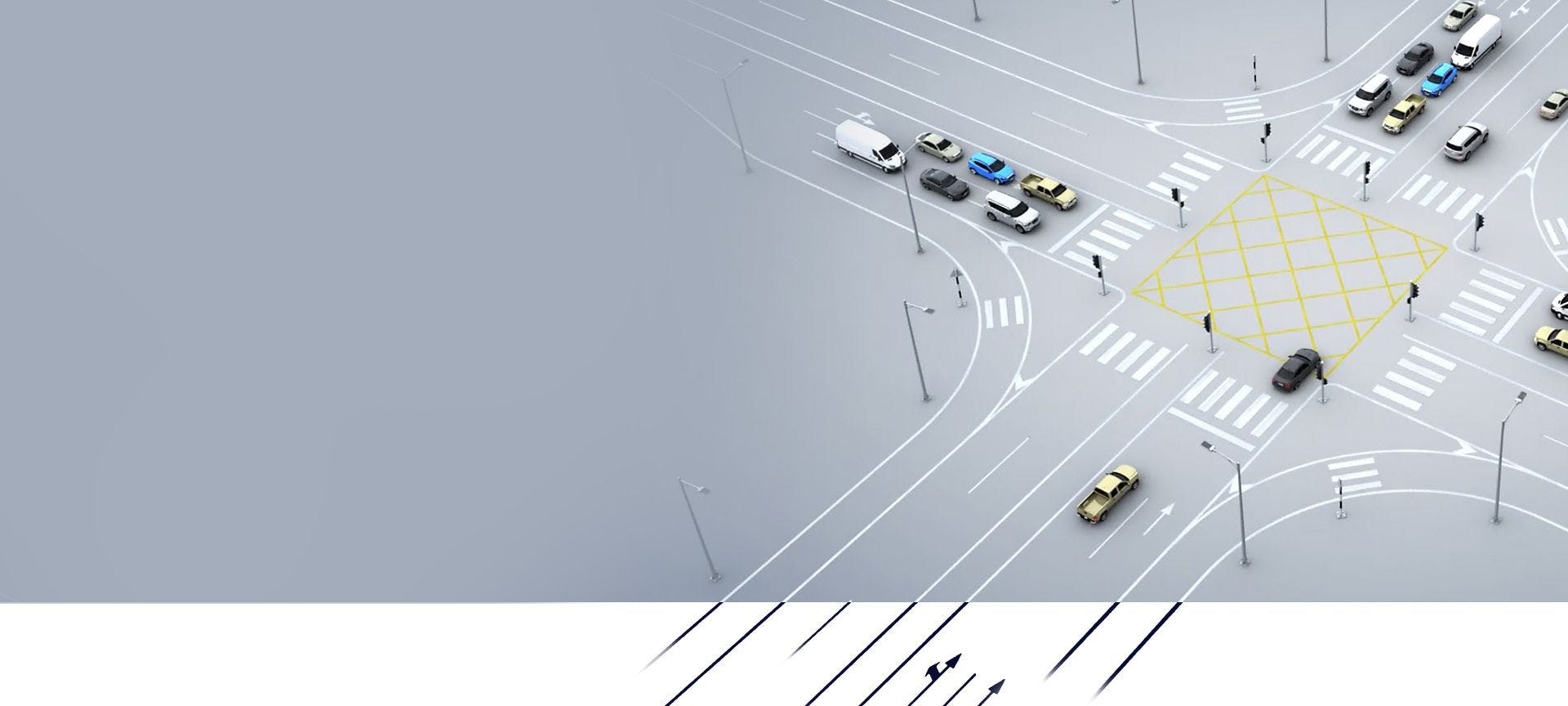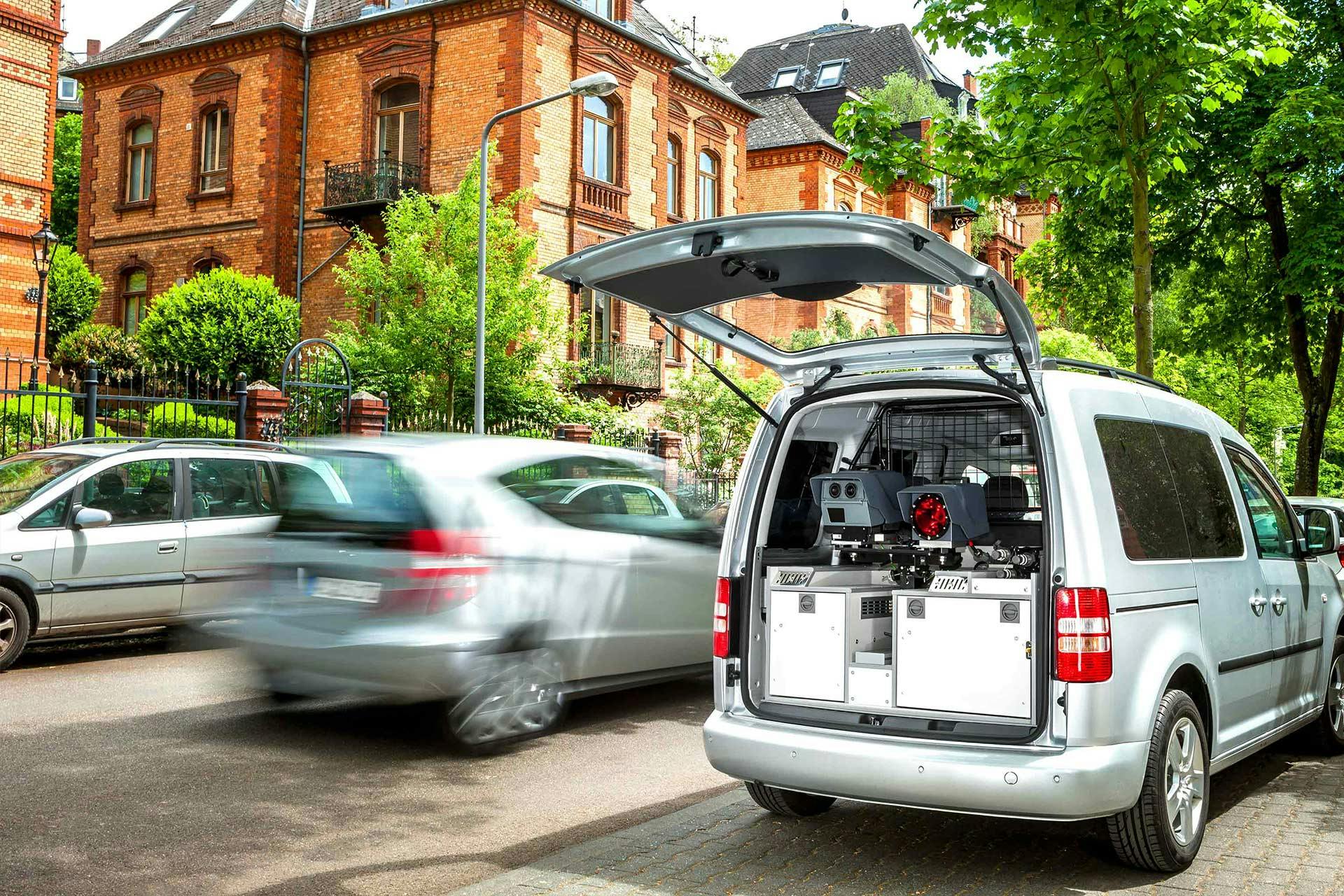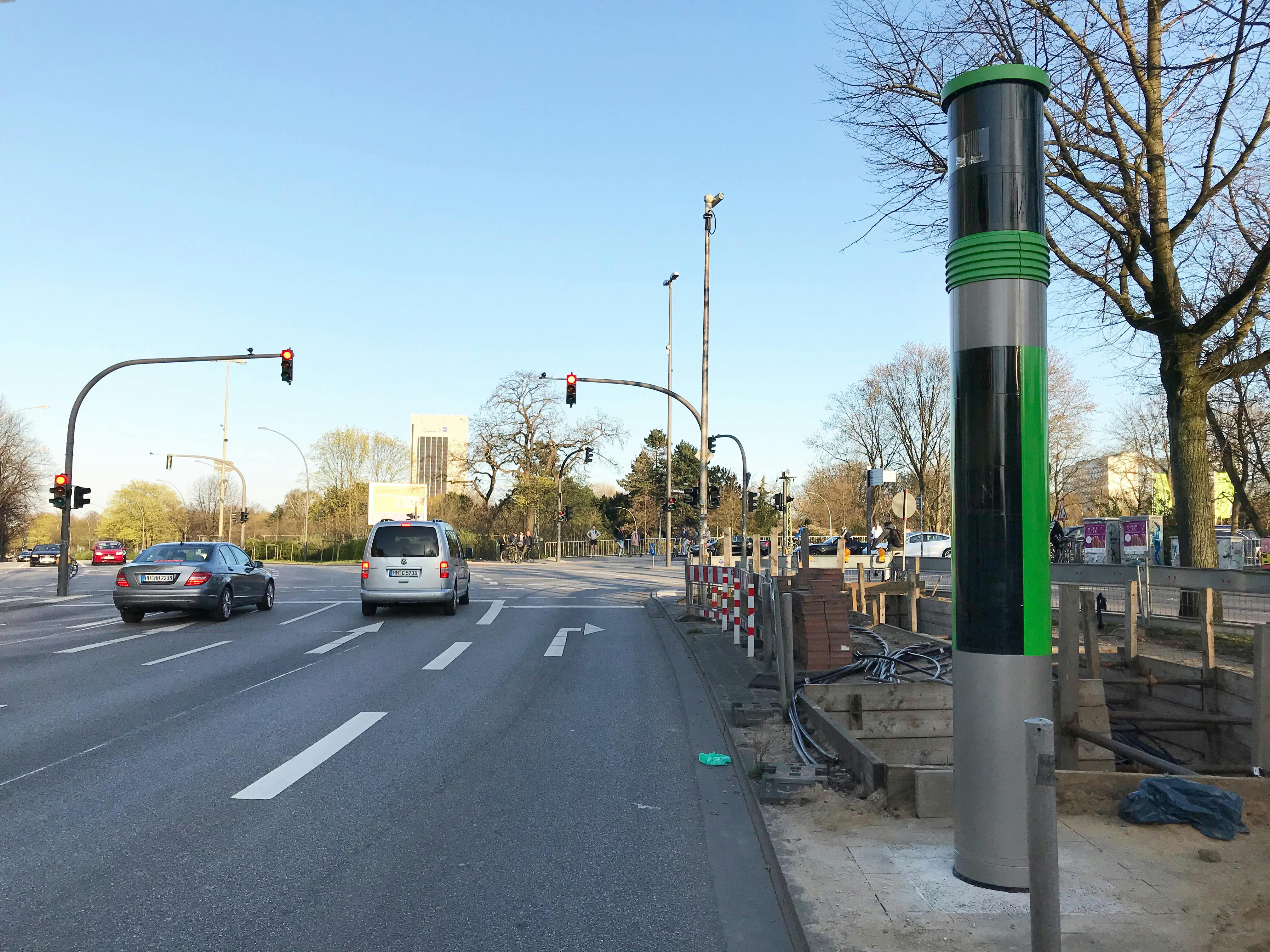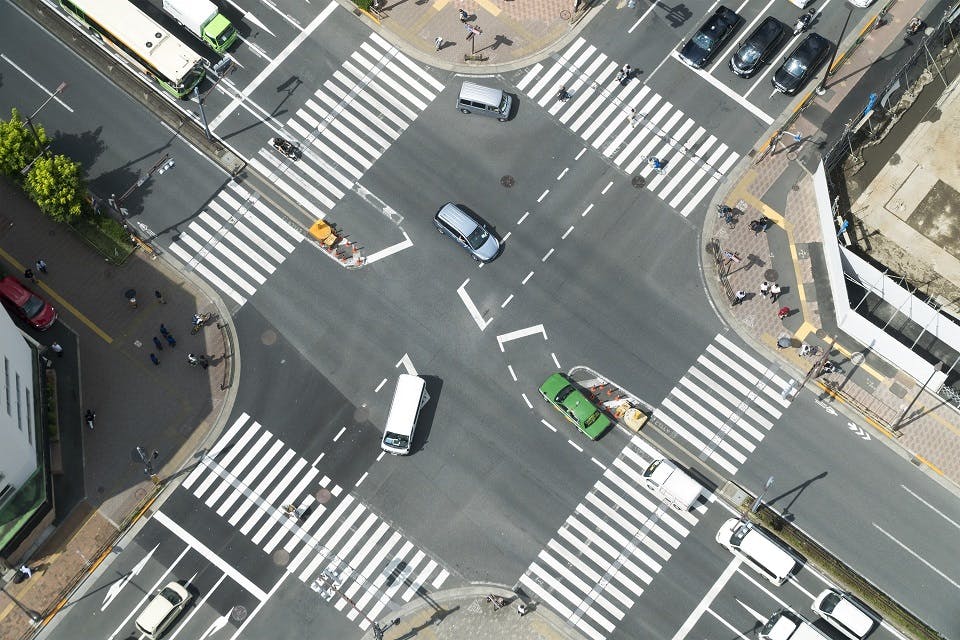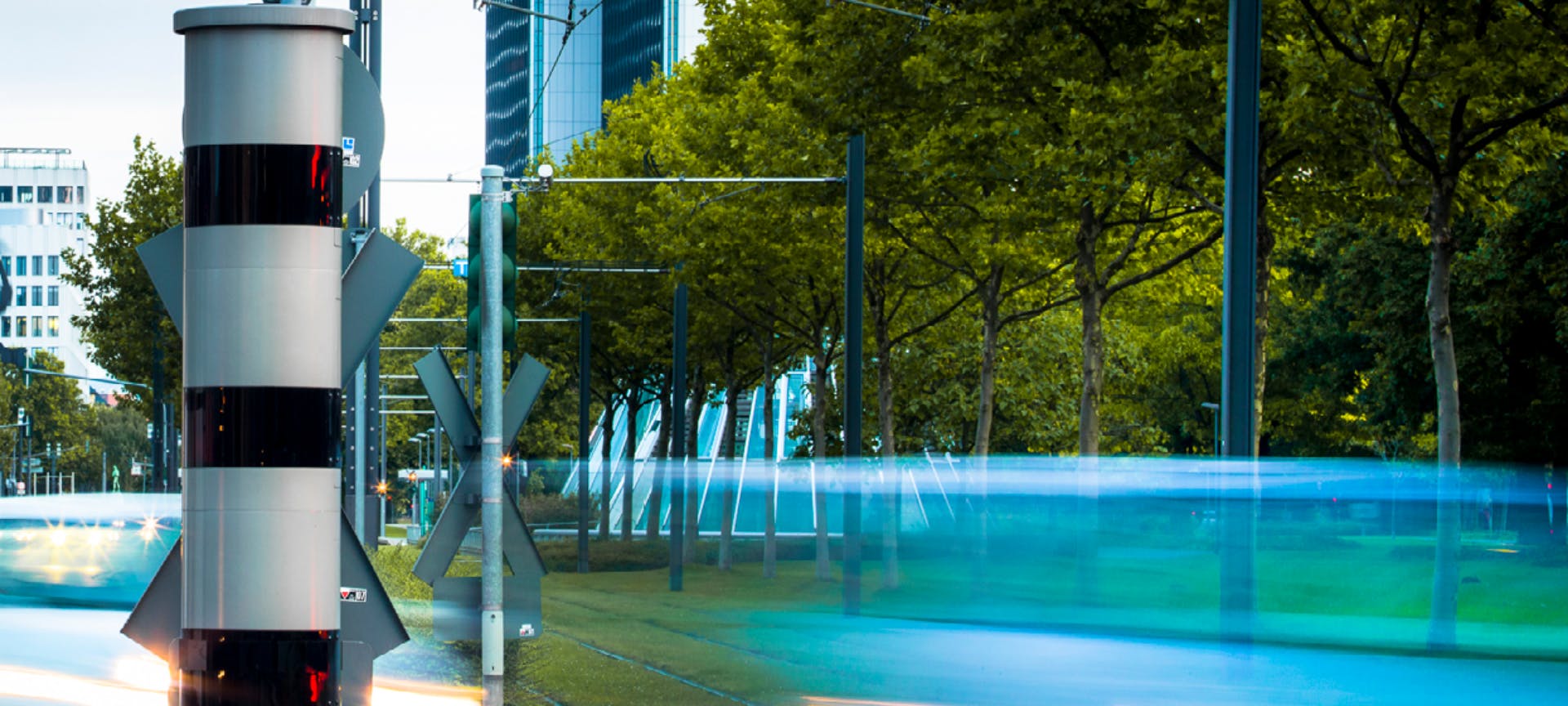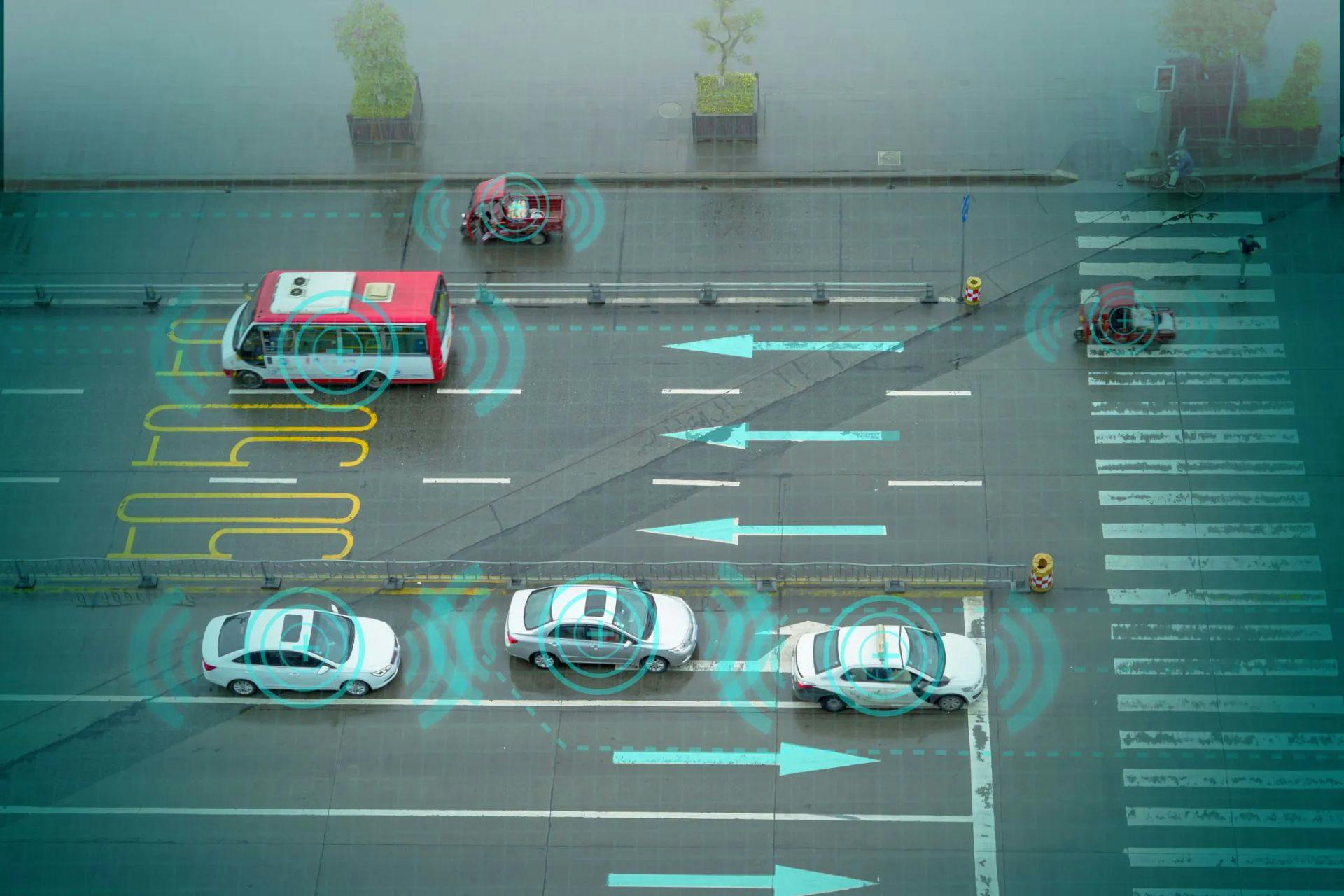Smart cities need intelligent and data-based road safety solutions. They provide safe mobility for all road users and reduce the number of traffic fatalities.

Smart Mobility Greater Safety for Vulnerable Road User (VRU)
Speed cameras, red-light cameras, object detection and agile speed limitations protect vulnerable road users.
Bicycles, e-scooters and pedestrians populate the inner cities. Especially in urban centers, the share of so-called VRUs in road traffic is increasing.
“VRU” is the abbreviation for “Vulnerable Road Users,” i.e. road users who are exposed to exceptionally high risk. VRUs are, for example, pedestrians, cyclists and users of small electric vehicles such as e-scooters. They are not surrounded by a protective driver’s cab as in cars or vans. Some publications also refer to road users without a crumple zone.
About half of the people killed and seriously injured in road traffic are vulnerable road users. In cities, this figure is as high as 70 percent. According to surveys by the German Federal Statistical Office, a total of 4,651 pedestrians were seriously injured in 2021 in Germany; more than 343 were killed. Crosswalks and pedestrian crossings are particularly dangerous points. There were more than 10,000 accidents at these traffic points. But it is not only pedestrians who need to be better protected—cyclists are particularly at risk. According to the Federal Statistical Office, a total of almost 98,000 cyclists were injured and 474 killed in 2021.
The downside of this positive development: congested bike lanes, traffic jams at bike stoplights. Car drivers are overwhelmed. More accidents involving two-wheelers—especially in built-up areas, where on average 90 percent of bicycle accidents result in personal injury. And the situation is getting worse due to new and faster types of vehicles such as e-bikes and pedelecs. Already, pedelecs and e-bikes account for about one-third of bicycle fatalities. Due to their higher speeds, these vehicles place significantly higher demands on riders—but also on other road users such as car drivers.
Get off the throttle—and off the pedal!
Faster and nimbler two-wheelers reduce the reaction times of vehicle drivers. The faster both road users, the higher the risk. Excessive speed is therefore also one of the main reasons for accidents with VRUs in road traffic. The solution: Get off the throttle—and off the pedal! Various studies show that the number of fatal accidents, for example, can be significantly reduced by introducing 30 km/h speed zones (19 mph). The European Transport Safety Council (ETSC) considers speed limits of 30 km/h in all inner-city areas, which are naturally frequently used by pedestrians and cyclists, to be the most effective measure. Spain is already setting a good example: Since May 2021, speed limits of 30 km/h have been in force in all cities, with a few exceptions. With this measure, Spain aims to further bring down the figure of 36 traffic fatalities per 1 million inhabitants measured in 2019.
However, driver error and human error remain the most common causes of accidents in cities. Errors when turning, reversing, pulling in and out are in first place. Failure to yield the right of way is in second place, and failure to maintain safe distances is in third place. However, severe accidents almost always result from inappropriate speed. In addition, speeding makes intersections and junctions particularly dangerous.
Intelligent technology for fewer traffic fatalities
To implement traffic concepts for greater safety, it is necessary to have reliable data for the federal government, cities and municipalities, but also for road users. For many years, speed and red-light monitoring systems have made an indispensable contribution to monitoring road traffic, preventing accidents and protecting particularly vulnerable road users.
Using Artificial Intelligence (AI), or more precisely Convolutional Neural Networks (CNN), opens up new possibilities in the field of traffic monitoring. In the past, complex systems were necessary to reliably detect individual road users, but today AI-based systems can do this with comparatively little effort. The actual know-how is in the software. Intelligent video analysis, for example, can distinguish between different types of road users in real time—and also identify VRUs that are particularly at risk, for example. All that is needed is a camera with a compact computing unit and a suitably trained neural network.
More safety at crosswalks in Dubai
In Dubai, a pilot project has already been implemented that shows how machine learning and AI can be used to increase safety at crosswalks. The “Pedestrian Safety Enforcement System,” jointly developed by Dubai Police and VITRONIC Middle East, enables rule-based monitoring of crosswalks in the megacity.
A CNN-based system monitors a crosswalk and automatically distinguishes between pedestrians, cyclists, and motorized road users. If a vehicle disregards the pedestrian’s right of way at the crosswalk or endangers the pedestrian, a violation is documented similar to red light monitoring. In addition, the system can also be connected to a traffic light control system in order to automatically switch an existing traffic light to red and allow pedestrians to cross.
Research project in Potsdam: Intelligent infrastructures to support automated vehicles
The rapid development of automated and connected driving has the potential to improve road safety. Until this type of vehicle is widely adopted, the use of intelligent road infrastructure solutions is essential to ensure the safety and sustainability of future mixed traffic.
Accidents involving vehicles colliding with vulnerable road users (VRUs) continue to occur, particularly at intersections. For this reason, VITRONIC has been working with a leading German research institute for traffic technology since 2021 to set up a real-life laboratory at an intersection in Potsdam. The lab will investigate how automated and connected vehicles can be optimally supported by intelligent infrastructures in complex traffic scenarios. The technology developed will be able to use object recognition to record the movement patterns of road users, analyze this information for potential hazards and send warnings to automated vehicles in an emergency. The results of this research project are promising, and the tested approach can be used in many application areas. Read more about the project in our case study.
Summary
In Brief:
- Vulnerable Road Users need extra protection on the road
- Excessive speed is one of the main reasons for fatal accidents
- Technical systems in the field of traffic monitoring help to protect the health and life of VRUs
- Artificial intelligence creates new innovative opportunities such as VRU detection

